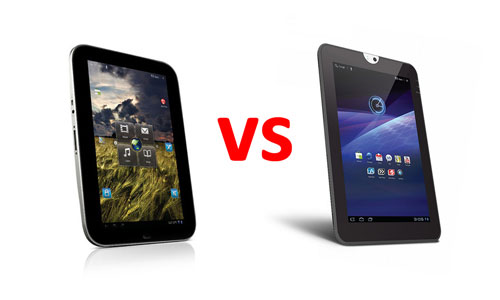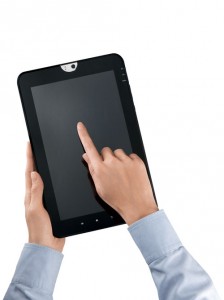
The last six months have seen just about every hardware manufacturer bringing a tablet computer to market. On the whole, they’ve been compared with either the iPad 2 or the Samsung Galaxy Tab 10.1. But we thought we’d compare apples with apples in this match-up between the latest Android tabs from Toshiba and Lenovo.
The Lenovo IdeaPad K1 and the Toshiba AT100 Thrive are very similar in terms of base specifications. Both are 10-inch tablets with 1280×800 screen resolution, they both only offer Wi-Fi connectivity, and both run Android 3.1.
Both also have 1GHz processors and include 1GB of RAM. They each have a 5-megapixel rear camera and 2-megapixel front-facing shooter and cost less than R5 000. The Lenovo takes an early lead in the shoot-out because its rear camera includes an LED flash – something not that often seen in tablets.

Weighing in at 725g, the Toshiba is marginally lighter than the 748g Lenovo, but then the Lenovo is just less than 13mm thick while the Toshiba is decidedly chunky at 16mm, making it only marginally thinner than a MacBook Air and almost as thick as two Samsung Galaxy Tab 10.1s stacked on top of each other. That’s another point to the Lenovo.
Both machines’ displays are more muted in terms of colour than the likes of the Galaxy Tab 10.1, but they’re both highly responsive to the touch and typing on either is a pleasure.
There’s little contest in terms of on-board sound. Both devices include a pair of speakers but both also underwhelmed when it came to sound. Of course, very few people actually use the built-in speakers much, so with a decent pair of headphones this isn’t likely to pose a real problem for most users.
Though both tablets are running Google’s Android 3.1 operating system, Lenovo has opted to add far more extensive overlays and tweaks to the user interface than Toshiba and, on the whole, they’re good.
Particularly pleasing is a central “hub” on the IdeaPad’s main screen that offers one-touch links to predefined applications for music, e-mail, reading and video, with a link to the Internet browser in the centre.
Two things the Lenovo offers that you don’t find on the Toshiba are a home button — located in the centre of the bottom bezel when the device is in portrait orientation — and the Lenovo app store, essentially a selection of Lenovo-vetted Android apps aimed at reducing the amount of time users have to spend looking for software that is well-suited to the device.
The Toshiba, meanwhile, offers its own compelling differentiators. Chief amongst these is its inclusion of full-sized connectors, though they are beneath an annoying and flimsy cover. The Thrive offers an HDMI, USB, mini USB and a full-sized SD card slot, all of which earns it a bucketload of points.

Though the decision to include a mini USB port rather than the more common microUSB port is a strange one, including USB and HDMI ports seems inspired. What’s far less inspired is the fact that the Toshiba only supports FAT file system and not the NTFS so common to external hard drives. The result is that the Toshiba won’t play nicely with files bigger than 4GB.
Still, full-sized ports are a move in the right direction and earn the Toshiba a few points. It earns a few more from the fact that the rear cover is removable, meaning you could — if you so wished — carry a spare battery.
Both devices have proprietary charger cables, which is something we’ve come to expect from all tablets. The Toshiba’s resembles a standard laptop power cable and the Lenovo’s is a fatter version of an Apple-style connector. We’d love to see tablet power connections become standardised in the way they have on smartphones. However, we aren’t expecting this to happen any time soon, particularly as custom chargers mean custom docks, and that means more revenue for manufacturers.
The Lenovo IdeaPad K1 costs R4 599 for a 64GB model, while the Toshiba AT100 Thrive is R4 999 for a 16GB model. Though both are expandable via SD and microSD cards respectively, considering its excellent user interface overlays and slightly better screen, the Lenovo is TechCentral’s winner.
Though the Toshiba isn’t bad for the price, the Lenovo edges it out with a couple of superior design choices, its larger on-board memory and better battery life of more than eight hours versus its rival’s six. — Craig Wilson, TechCentral
- Subscribe to our free daily newsletter
- Follow us on Twitter or on Facebook
- Visit our sister website, SportsCentral (still in beta)




